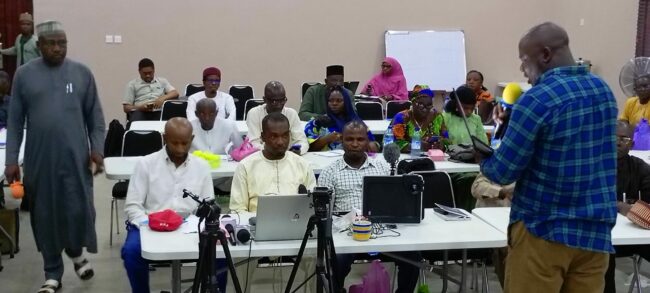Media organisations and practitioners have been charged, as a matter of urgency, to hold governments at all levels and policymakers accountable for their commitments to addressing child poverty.
Practitioners can do that by exposing corruption, inefficiency, and a lack of transparency in the implementation of poverty reduction policies and putting pressure on authorities to take action.
The assertion was made by a lecturer with the Department of Economic and Development Studies, Federal University of Kashere, Dr Ali Madina Dankumo, during a media dialogue on child poverty with the theme ‘Addressing child poverty in Bauchi, Gombe, and Adamawa States’ held at the Evolution Hotel, Gombe, on Tuesday.
The University Don was speaking on the Effects of Child Poverty on socio-economic development in Nigeria
stating that child Poverty contributes to social unrest and crime rates as individuals may turn to illegal activities as a means of survival, which in turn undermines social cohesion and stability and impedes socio-economic development.
According to him, “Since children are the future workforce and leaders of a nation, failing to address child poverty deprives the country of the potential contributions of its youths, limiting overall capital development and innovation.”
On his own, UNICEF Social Policy Specialist, Bauchi Field Office, Yusuf Auta, called on federal, state, and local governments in the country to increase budgetary allocation for child-focused interventions.
He said that the call became necessary considering the fact that children are the majority population in most states of the federation.
Yusuf Auta explained that child poverty is when a child lacks access to basic consumption needs such as nutrition, shelter, education, healthcare, and WASH, amongst other things.
He stressed that the government should prioritise the welfare of children, as they are dependents and the most vulnerable in any society.
He also stated in the 2022 Population Projection that Adamawa State has a population of 4.9 million, Bauchi 8.3 million, and Gombe State has 3.9 million.
Yusuf Auta added that the population of children between 0 and 17 years old in Adamawa is 2.4 million; in Bauchi, it is 4.7 million; and in Gombe State, it is 2.1 million.
According to him, “You can now see that children are the bedrock of any sustainable society, but if this segment of the population is deprived of their rights to education, water, sanitation, nutrition, health, and protection, then there is a problem, as this in turn has a negative impact on the development of the nation.”
The Specialist also said that “the 2022 Multiple Indicator Cluster Survey (MICS) states that 73 million children in Nigeria, representing 71.9 per cent, were multi-dimensionally poor in 2016–2017, while 64 million children, representing 60.6 per cent, were multi-dimensionally poor in 2021. 47.7 per cent of children in Nigeria experienced monetary poverty, that is, those who live in households surviving on N376.5 per day in 2019.”
He also said that, according to the report, the extreme poverty rate is expected to increase in 2023, with an estimated 84 million Nigerians living below $1.9, the world’s second-largest poorest population after India.
Journalists and Commissioners of Budget and Economic Planning from Adamawa, Bauchi, and Gombe States are attending the 2-day workshop, which is aimed at equipping journalists with data to enable them to advocate for a better life for children through their reports and special features.
ALSO READ THESE TOP STORIES FROM NIGERIAN TRIBUNE
